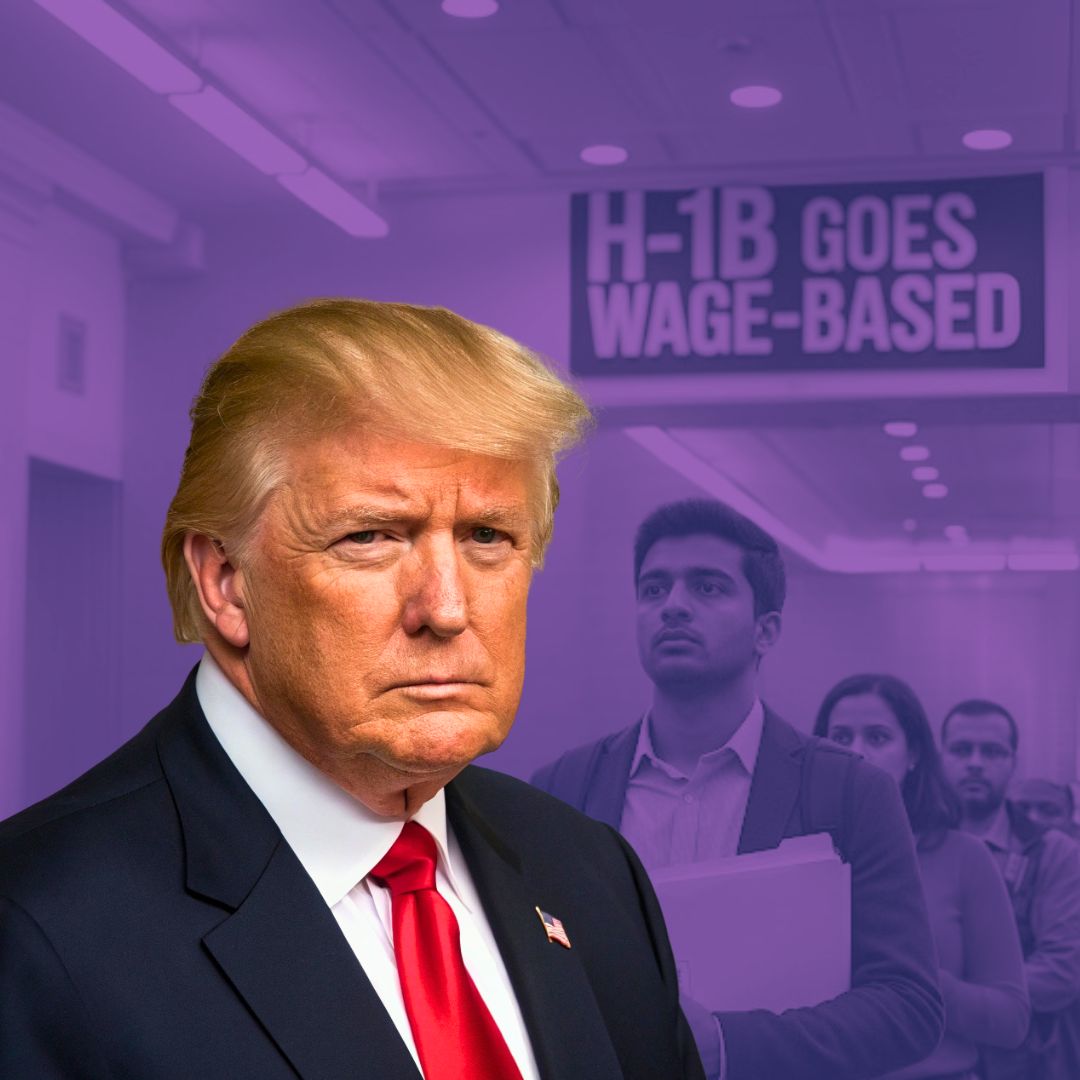The Trump administration’s 2025 reforms to the H-1B visa programme mark a significant shift from the established lottery system to a wage-based selection method, prioritising higher-paid foreign professionals. This overhaul, also affecting Green Card processes, aims to protect American jobs by ensuring only the “best paid” skilled workers enter the U.S.
The changes are expected to disproportionately impact Indian IT professionals, who constitute over 70% of H-1B visa holders, especially early-career and entry-level workers. Indian industry leaders warn about disruptions to talent flow and economic ties, while U.S. officials maintain that these reforms rectify past abuses and safeguard local workers. Additionally, the government plans a new ‘Gold Card’ visa to attract wealthy investors.
Wage-Based Selection to Replace Lottery System
Previously, H-1B visa recipients were selected through a randomized lottery when applications exceeded the annual quota of 85,000. The Trump administration’s new rule introduces a salary-led system, favouring applicants with higher wage offers, specifically focusing on the top two wage levels defined by Occupational Employment Statistics.
According to U.S. Citizenship and Immigration Services (USCIS) Director Joseph Edlow, this ensures that “only highly skilled and highly paid foreign professionals” enter the workforce, mitigating undercutting of American salaries. Commerce Secretary Howard Lutnick reinforced this view, branding the previous lottery as “terrible” and emphasizing the need to “pick the best people” for American jobs.
However, this move excludes many early-career or entry-level foreign workers, a demographic largely composed of Indian graduates beginning their careers in the U.S. technology sector.
The ‘Gold Card’ and Green Card Overhaul
In addition to the H-1B changes, the administration is revamping the permanent residency (Green Card) process. A new ‘Gold Card’ visa is proposed, offering a pathway to residency and eventual citizenship for foreign investors contributing $1 million to businesses or $800,000 to economically distressed or rural areas.
This policy seeks to attract capital investment while reshaping traditional immigration routes. Lutnick pointed out disparities, noting the average American earns $75,000 annually, whereas many Green Card recipients earn less, calling for a system that “starts picking the best people.”
The ‘Gold Card’ initiative reportedly has attracted extensive interest, with applications potentially generating large-scale investments. Still, critics argue this emphasis on wealth-driven immigration overlooks skilled workers’ contributions and may reduce opportunities for professional immigrants.
Impact on Indian Workers and U.S. Businesses
India continues to dominate the H-1B visa recipient pool, particularly in IT and STEM sectors. Experts warn that the shift to a wage-based system will curtail access for younger professionals and fresh graduates from India, disrupting career trajectories and upsetting existing talent pipelines.
NASSCOM, the Indian IT industry association, stressed that Indian professionals fill critical skill shortages in U.S. tech firms and called for policies that maintain business continuity. Smaller American companies, which depend heavily on affordable skilled workers, could face challenges hiring globally specialised talent.
At the same time, the reforms align with a broader U.S. political agenda to prioritise domestic employment and address concerns about visa misuse for underpaying foreign workers. Critics caution the reforms could reduce the U.S.’s competitive edge in innovation, especially as countries globally vie for top talent.
The Logical Indian’s Perspective
The imperative to protect domestic labour markets is understandable; however, the H-1B visa reforms should not come at the cost of alienating a valuable workforce that actively contributes to America’s economy and India-U.S. relations.
The Logical Indian believes immigration policies must embrace equity, inclusion, and long-term economic cooperation, blending security with openness. Globalisation and interconnected markets demand collaboration rather than isolation. Instead of erecting barriers that fragment talent flows, governments should pursue reforms that nurture mutual benefit, dialogue, and shared progress.












